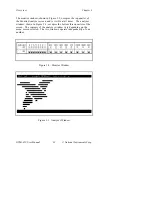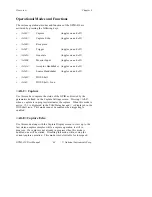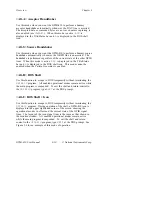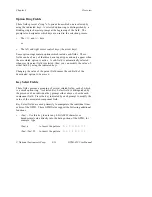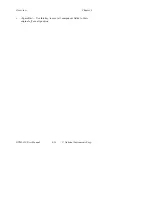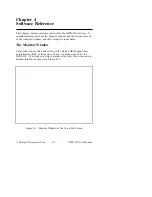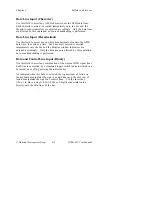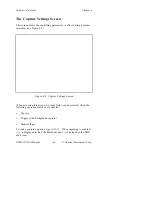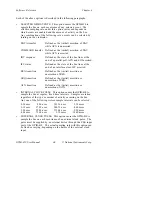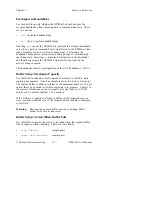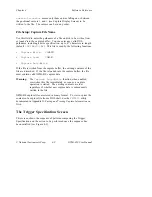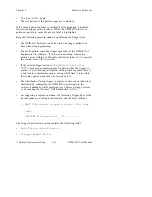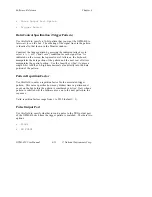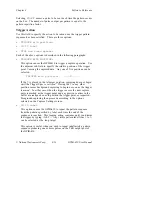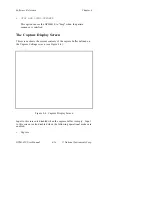
Software Reference
Chapter 4
GPIB-410 User Manual
4-2
© National Instruments Corp.
The two left-most sections of the Monitor window display the contents
of the eight data lines in character, hexadecimal, and binary format.
The two right-most sections display the contents of the eight control
lines in binary format. The lower portion of each section contains
corresponding user input fields, which are selectable using the left and
right cursor control keys.
The binary indicators and fields are displayed graphically as simulated
LEDs and toggle switches, as shown below.
Switch (on)
Switch (off)
LED (on)
LED (off)
Each LED indicates whether the corresponding signal is asserted or
unasserted on the bus. Each switch indicates whether the corresponding
signal is asserted or unasserted by the GPIB-410. You can change the
settings of the switches only when Monitor Input mode is active,
indicated by
MON
in the Title/Status bar. Press <Alt-M> to enable or
disable Monitor Input mode.
Lines that you assert by setting the corresponding switches to ON
remain asserted in between separate invocations of Monitor Input mode,
unless they are changed during operation of the Pattern Generator.
Note:
Monitor input is temporarily disabled when the Pattern
Generator is running and during access to the Help utility.
When any field of the Monitor window is active, pressing function key
<F10> performs one cycle of the acceptor handshake in response to the
assertion of DAV. Before using this function, you must initialize the
handshake by pressing <F10>–this asserts NDAC and puts the GPIB-410
in the Acceptor Ready State (ACRS). After that, each time you press
<F10> in response to DAV, the GPIB-410 executes one cycle of the
acceptor handshake, returning to ACRS when DAV becomes unasserted.
The Monitor Window contains the following fields from left to right.
•
Data Line Input, (Character)
•
Data Line Input, (Hexadecimal)
•
Data and Control Line Input, (Binary)

